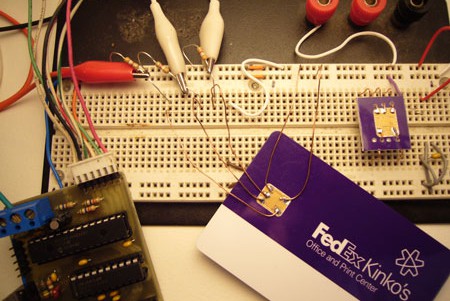Our wallets are filling up with SIM and RFID cards that contain hidden information. Using our latest project, the Bus Pirate universal serial interface, we can dump the memory from many common smart cards. In today’s How-to, we show you how to interface common smart cards, and walk you through the data stored on a FedEx Kinko’s prepaid value card.
Continue reading “How-to: Read A FedEx Kinko’s Smart Card (SLE4442)”















